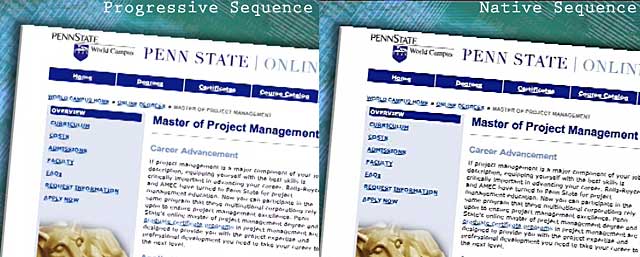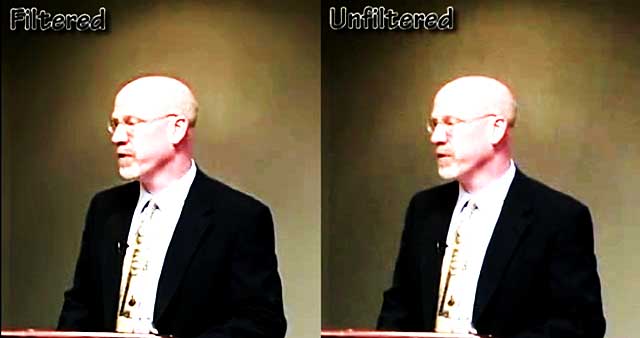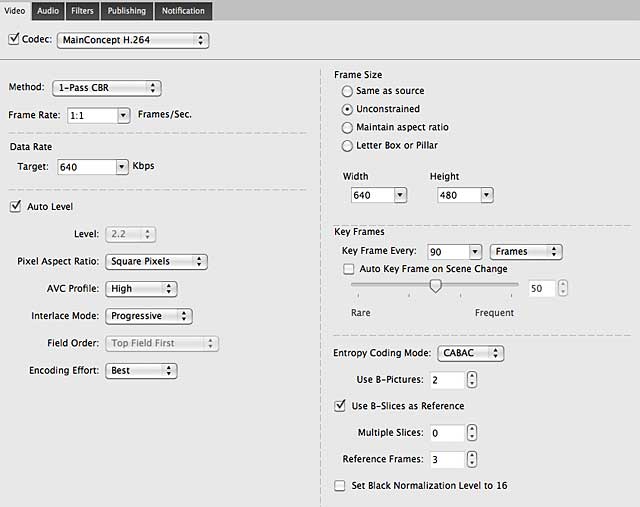如何将dvd转换为自适应流媒体:3 / 4
欢迎来到我们的第三部分 案例研究 我们把三张训练dvd转换成多个H.264文件的自适应流. 当我把你留在家里 最后一部分, 客户对我最初展示的质量不满意, and would opt to cancel the project if we couldn't improve the quality to meet his standards. 在这一部分中,我将详细介绍我用来做到这一点的技术.
 作为其中的一部分, I'll discuss the workflow used to rip the files from the DVDs and edit them in Adobe Premiere Pro. 这包括我使用Adobe Premiere Pro的原因, 我如何创建我的序列预设, 我是怎么过滤的,为什么过滤, 用于创建中间文件的格式, and why I decided not to de-interlace and render to final format in Adobe Premiere Pro.
作为其中的一部分, I'll discuss the workflow used to rip the files from the DVDs and edit them in Adobe Premiere Pro. 这包括我使用Adobe Premiere Pro的原因, 我如何创建我的序列预设, 我是怎么过滤的,为什么过滤, 用于创建中间文件的格式, and why I decided not to de-interlace and render to final format in Adobe Premiere Pro.
作为概述, there are (at least) three factors that impact the quality of files encoded into the H.264格式. 首先是H.使用的264编解码器和编码工具. I had originally encoded my test files in Adobe Premiere Pro, which uses the MainConcept H.264编解码器,这是最好的可用在任何商业编码工具. According to trials produced for the StreamingMedia 原始资料 and my own book, Adobe媒体编码器产生H.264文件,比较相当有利的最好的类. 显然,这个问题与编解码器或编码工具无关.
下一个因素是预处理. 当你在处理之前被压缩过的镜头时, 就像这个项目中基于dvd的镜头一样, 过滤掉噪音确实有助于提高质量. The original clips that I showed the client weren't filtered, which in retrospect was a mistake. 面对第四种情况,我不会再犯同样的错误了.
最后一个因素是去隔行, which really involves identifying the best deinterlacing tool and technique and the optimal work flow for getting there. I chose to edit and filter in Adobe Premiere Pro for reasons discussed below, but Adobe's deinterlacing filters had failed me in my initial trials with the client. I had to find another encoding tool and the best work flow for getting to that tool.
只是为了记录, 这次我是按工作计酬的, 不是按小时计费的, 因此,从经济上讲,尽快完成这项工作是有意义的. 在这方面,有一个停止撕裂/H.264 encoding tools that I could have used, including Handbreak and several others. However, since I needed to filter the DVDs, a one-stop tool was out of the question. And yes, I did check to see if the original uncompressed source was available, and it wasn't.
翻录dvd
如前所述,dvd没有复制保护. Originally, I was looking for a tool to convert the Video Object (VOB) files on the DVD to .无需重新编码的MPG文件, since I figured that I could input MPEG-2 video into both Adobe Premiere Pro and Apple Final Cut Pro. Note that I was editing on a Mac because I knew that I might have to output an intermediate file to import into a separate editor, 我选择的格式是Apple ProRes.
I recalled using Pinnacle Studio years ago to rip unencrypted VOB files into .英里/加仑的文件, 但我目前的工具都不具备这种能力, So, 我在谷歌上搜索了“刻录DVD”或类似的东西,并找到了几个工具, 尽管没有人将VOB文件转换为 .英里/加仑的格式. 一时兴起, 我使用文件管理器将VOB文件从DVD复制到我的硬盘上, 然后试图将它们直接导入Final Cut Pro. 不行. 然后我尝试了Adobe Premiere Pro,它们直接导入了. 我找到了我的编辑.
选择序列预设
对于这个项目, 我们输入的是交错4:3的视频, 它的分辨率为720x480,像素宽高比为 .9, and outputting a progressive file at 640x480 resolution using square pixels, 或者像素宽高比为1.0. 在这个过程中,我们将不得不去交叉.
When working with a project where the output file has a different configuration than the input file, 当涉及到创建序列预设时,您有两个基本选项. 第一个, 您可以创建与输出文件匹配的序列预设, 在本例中为640x480渐进预设. 如果您选择此选项, 编辑器自动将所有素材输入到序列中, producing the unhappy result shown on the left in Figure 6 with this highly detailed footage.
The second option is to use a sequence preset that matches the parameters of your input file and deinterlace during encoding, 哪一个产生了右图所示的框架. 视频开始35秒的时候,他的脸上就出现了这个锯齿状的东西, 难怪客户拒绝了.

公平地说, Premiere Pro在去隔行化大多数视频片段方面做得很好, 但是这个项目中使用的文本需要一些专门的控件. So, we would have to output an interlaced intermediate file from Premiere Pro and deinterlace and encode in another tool.
这种认识推动了多方决策. 第一个, 我们将使用与从DVD导入的素材相匹配的预设, 哪个Premiere Pro可以很容易地创建. I just dragged a VOB onto the New button on the bottom of the Project panel and Premiere Pro created a sequence with the same parameters as the ripped file. 然后我把所有的VOB文件按适当的顺序拖到序列中, 并准备好进行噪声过滤.
我还知道我将使用 视频滤镜. 与大多数噪声滤波器不同, the 视频滤镜 uses sophisticated algorithms to discern and remove only true noise, 几乎没有模糊或失真.
虽然滤镜将渲染时间提高了6倍, it reduced visible noise in all encoded files with some reduction in blockiness. You can see this in Figure 8, which I've treated to highlight the blockiness in the background. 左边是过滤后的版本, 在右边, 未过滤的, 说话人的右肩最明显. 这种差异在实时播放时更加明显, 滤过的画面明显有噪音吗.

最后, I knew that I was going to output in Apple ProRes 422 to create a file that I could input into my encoding tool. 尽管ProRes并不是完全无损的, it's a fast and efficient format that's always worked well for me in the past.
做了这么多决定, it was time to choose an encoding tool that provided the necessary deinterlacing quality to meet our goals. 幸运的是,搜索时间很短.
选择编码工具
多年来,Sorenson Squeeze在H.264 quality, and deinterlacing quality has been top notch all the way back to version 5.0. 所以,我先尝试了Squeeze.

挤压提供了多种去隔行选择, 如图9所示, 自动自适应丢弃字段为默认值. 不幸的是, 因为这个方法会丢弃一个字段, it makes for huge jaggies with highly detailed content like that shown on the left in Figure 10. 所以我尝试了自适应混合,它产生了如图所示的输出. 这是到目前为止我看到的最好的结果, 我们最终在生产中使用了它.

I should say that Auto Adaptive Discard Field does a slightly better job with real world footage, and if you look closely enough at the final encoded footage produced for SunCam, some frames show some slight jaggies that wouldn't be present had I used Auto Adaptive Discard Field. But clearly Adaptive Blend produced the best result with the key sequences at the start of the test video.
如前所述, 当编码自适应流, 您应该使用恒定比特率编码, choose the same key frame interval for all files with scene change detection disabled and to encode all files using identical audio parameters. 否则,H.264 encoding parameters are similar to what you would would use for single file encoding. Figure 11 shows the encoding parameters that I used for the 700 kbps file; other encodes were identical except for the video data rate.

So, 回到牧场, I deleted the fast zoom-out from the test sequence and reencoded the rest using this workflow and encoding parameters, 包括一个400 KBPS的文件只是为了好玩. Then, I uploaded the files to a Dropbox account for the client to play and crossed my fingers.
不到一个小时,我就收到了以下回复. “优秀! 甚至400kbps的文件现在看起来更好了,1mbps的文件看起来也很棒. 让我们使用新的比特率,然后继续. 不错的工作!"
哼,项目开始了. Now I just had to figure out how to most efficiently produce and quality control the encoded files.
Jan Ozer的文章首先出现在在线视频上.网
提及的公司及供应商